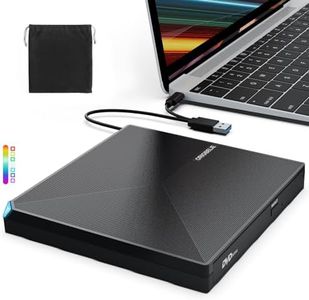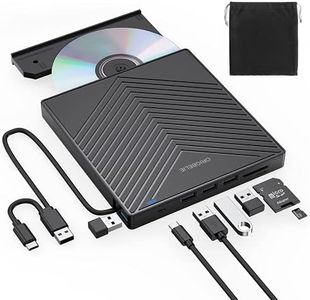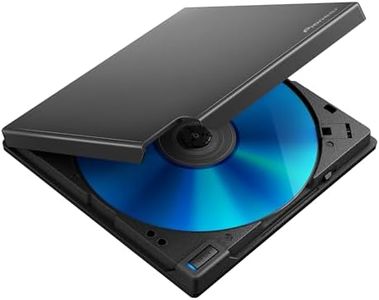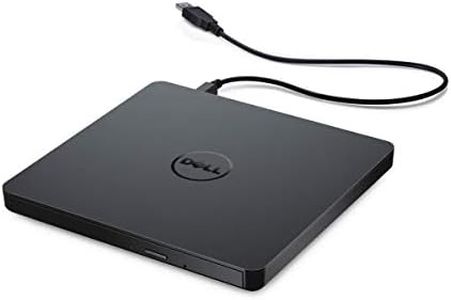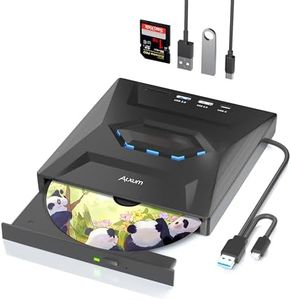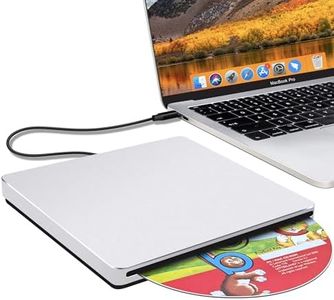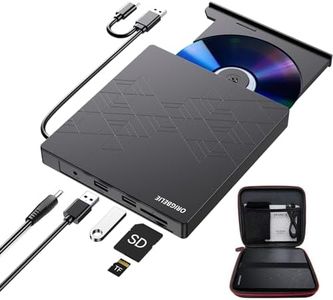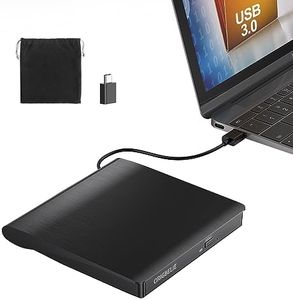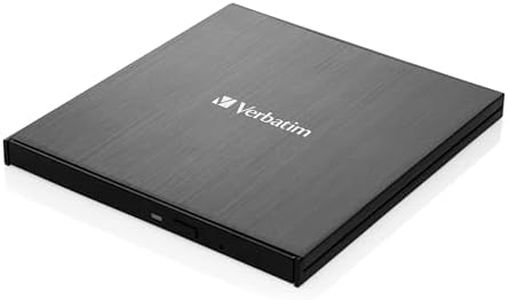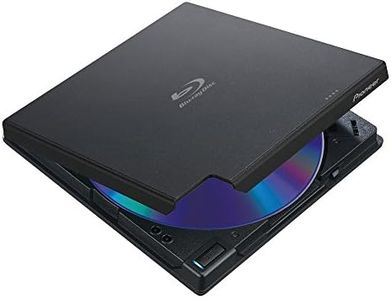We Use CookiesWe use cookies to enhance the security, performance,
functionality and for analytical and promotional activities. By continuing to browse this site you
are agreeing to our privacy policy
10 Best External Cd Dvd Drives
From leading brands and best sellers available on the web.Buying Guide for the Best External Cd Dvd Drives
When shopping for an external CD/DVD drive, it's important to focus on your specific usage needs to find the best fit. Think about what devices you'll connect it to, whether you'll mostly read or also write discs, and if you'll want extra portability for travel. Understanding a few key features will help you narrow down options and avoid paying for capabilities you don’t need or missing out on essential ones.Read and Write SpeedsThis spec refers to how quickly the drive can read data from and write data to CDs or DVDs. Faster speeds mean less waiting when copying files, burning discs, or installing software. Drives are typically divided into basic, medium, and high-speed categories. Basic models handle discs at slower but still acceptable rates and work for occasional users, while medium and high-speed drives are better for those who often need to burn large amounts of data or use the drive regularly. Consider how often you'll use the drive and whether saving time is worth prioritizing.
Compatibility (Operating System and Disc Types)This tells you which computers and discs the drive will work with. Some drives only work with certain operating systems or can read/write only specific types of discs, like CDs, DVDs, or dual-layer DVDs. Drives often divide into those supporting just CD, both CD and regular DVD, and advanced ones handling DVD-RW or dual-layer formats. If you plan to use the drive for movies, music, or backups, make sure it supports all the disc types you'll need and matches your computer system. Check what you want to do most—for example, burning DVDs or just reading CDs—and match to the drive’s capabilities.
Connection Type (USB-A, USB-C, etc.)This describes how the drive connects to your computer, and it's crucial for compatibility and convenience. Most external drives use a USB connection, but the kind of port—like USB-A (the traditional rectangular plug) or USB-C (the smaller, oval plug on newer computers)—makes a difference. Drives can be categorized by the included cable or adapter type. If you have a newer laptop with only USB-C, you'll need a compatible drive or adapters. Consider what ports your devices have, and select a drive that matches or comes with the necessary adapters.
Portability and Power SourceThis relates to the size, weight, and how the drive gets its power. Some external drives are slim and light, great for travel, while others are bulkier but sometimes more robust. Also, some are powered entirely through the USB connection, while others need a separate power cord. Drives can be divided into ultra-portable (USB-powered, small), standard portable (a bit larger, may need external power), and stationary. If you plan to use the drive on the go, pick a lightweight, USB-powered model. For desk use only, portability is less critical.
Durability and Build QualityThis refers to how sturdy and well-made the drive is and how it will stand up to frequent use or travel. You'll find drives made of plastic or metal, with some designed for extra protection against bumps. The categories here can range from basic (plastic, everyday use), to reinforced (metal or ruggedized for frequent handling). If you expect to carry the drive in your bag often, a solid build is wise; for home office use, basic durability may be enough.

